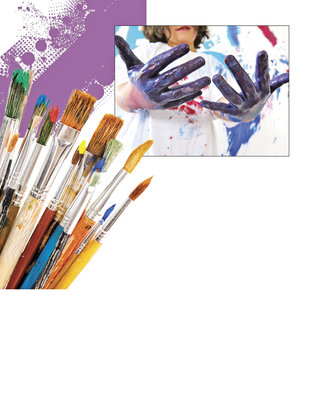In 2011, in an unassuming stretch of industrial buildings right before the entrance to the Pulaski Skyway, a new creative business model for the art world was sprung. Mana Contemporary, at 888 Newark Ave., is the brainchild of artist and entrepreneur Eugene Lemay. With fellow artist and Mana founding partner Yigel Ozeri, he has quickly developed an anonymous patch of Journal Square into a world-class arts destination.
Composed of warehouses that will eventually be connected via a Richard Meier-designed sculpture garden, Mana is a one-stop shop for the entire arts community. The professional, working artists who rent Mana’s spacious studios have access to in-house framing, crating, and shipping services—not to mention an artist-run foundry, a silkscreen studio, and a café and beer garden. It’s all part Mana’s mission to allow artists working in different media to collaborate, share ideas, and inspiration.
For serious collectors, Mana provides ample space to store and even exhibit their prized collections among five galleries. There is also a custom-furniture design business for museums and galleries and a large glass building slated to host art fairs and large-scale installations. Mana is massive in both size and ambition, and the business is growing quickly. It’s opened a facility in Chicago, and other locations will follow. I asked Lemay how he knew for certain that if he built it, they would come.
“Naturally the business side is important here, but first I’m an artist and that’s the controlling factor,” he said. “If an artist doesn’t have a business side, and usually they don’t, a project of this magnitude is not going to be successful. The tactics we are using are determined by the business side, and the concept is developed from the artist side.”
Mana does not solely focus on visual arts. There’s also rehearsal space for performing artists. While touring Mana, I spotted Karole Armitage, the famous New York-based choreographer whose company rehearses there. She was alone, offstage, intently sorting through her company’s props. This was in late 2013, at a time the public was able to visit Mana via employee-guided tours only. This is set to change in March 2014, when the facility will be open for general admission.
You’ll need to pace yourself. You won’t be able to take it all in at one go, and there is no reason to rush such a stimulating experience. In just one visit, I viewed a life-size sculpture of the late rapper Notorious B.I.G, created by Ben Keating, who runs the 30,000-square-foot foundry. He said he will be donating the sculpture somewhere in Brooklyn. Outside, I whizzed by an enormous, hyper-realist sculpture by Carole Feuerman, profiled in the TK issue of JC Mag, located in front of the glass building. Recently, an artist used the building to run his motorcycle over his paintings.
Back inside, I saw a gorgeous exhibit of “video paintings” by artists Shoja Azari and Shahram Kari—carefully filmed images of nature that are then painted, to lovely effect. I saw a video installation by Azari, “There Are No Non Believers in Hell,” in which famous Renaissance paintings go up in flames as a modern-day evangelical preaches about hell. A few floors up, I strolled among works by Andy Warhol, Keith Haring, and Roy Lichtenstein, part of an exhibit culled from the Pop Art Collection of the Frederick R. Weisman Foundation.
Lemay was unable to talk about all the rumored Mana projects in development, but he did disclose plans for some educational programming for the local community. Students—in Jersey City and at surrounding colleges—regularly tour Mana. Plans are also in the works for a cinema program, recording studios, and an art school.
In huge news for local architecture aficionados, Richard Meier and Partners is set to locate there in January 2014 in a 15,000-square-foot facility that will be open to the public and will include the Richard Meier Model Museum, as well as a research library, archives, and exhibition space.—JCM
An Arts Venue Extraordinaire
